Past and Future of Nippon Subculture ~No.4 The Fall of Kamigami Ⅱ~
こんにちは、コバヤシです。前回は (https://thatisgood.jp/taketokobayashi003/) 如何にヒトが太古から超越的存在をキャラクター化していたかということと、古きカミガミの話でした。今回は日本の古きカミガミが時代の変遷と共にどのように変容してきたか、という話です。
Hi, I’m Kobayashi.Last time (https://thatisgood.jp/en/taketokobayashi003/), I talked about how humans have been characterizing transcendent beings since ancient times, and about the ancient Kamigami. This time, I would like to talk about how the old Kamigami in Japan have been transformed over time.
さて、「日本人の国民性調査」という、統計数理研究所が五年ごとに行っている調査によると、特定の宗教を信じている人は28%、信じていない人は72%となっています。つまり、10人に7人は無宗教だと考えているということです。ちょっとデータは古いですが現在でもその割合はそんなにかわらないのではないかと思います。このように、無宗教の人が過半数を占める国はどのくらいあるでしょうか。2014年に発表された国際ピューリサーチセンターによる232カ国(国と地域合わせて)のうち、わずか6つの国のみだということです。これらはすべて、共産党が現在支配している国や過去において共産党が強い勢力を持っていた国・地域です。共産党が支配している国では、共産主義の考え方そのものが宗教と対立するため、宗教者や宗教的行為が弾圧されることが多いからです。
では日本人が無信心か、というとそういうわけでもありません。日本にはある宗教を信じているという自覚がないにもかかわらず、宗教的な行為をする人が多いのです。ですから、無宗教だと答える人が7割を超えるにもかかわらず、「宗教心は大切か」という問に、「大切だ」と答える人が6割を超えています(同調査)。クリスマスを祝った後には、神社に初詣に行き、お葬式は仏式と…悪く言えば節操がなく、アイデンティティに欠けているのかもしれませんが、宗教に対して寛容なのは素晴らしいことです。僕は宗教とは無縁の人間ですが、超越的な存在は信じています、僕は自分のことは無宗教なのではなく汎神教だと思っています。
According to the “Survey of Japanese National Character” conducted every five years by the Institute of Statistical Mathematics, 28% of people believe in a particular religion, while 72% do not. This means that 7 out of 10 people consider themselves to be non-religious in Japan. The data is a bit old, but I think the percentage is still the same today. How many countries have such a majority of non-religious people? Only six out of 232 countries (countries and regions combined) according to the International Pew Research Center in 2014. These are all countries and regions that are currently controlled by the Communist Party or where the Communist Party was a strong force in the past. This is because in communist-controlled countries, the very idea of communism is at odds with religion, and religious people and religious practices are often suppressed. So Japanese people are unbelievers? It is not that way. There are many people in Japan who are not aware that they believe in a certain religion, but still engage in religious acts. Therefore, despite the fact that more than 70% of the respondents say they are not religious, more than 60% of the respondents answered “Yes” to the question “Is it important to be religious?* (Same survey) After celebrating Christmas, we go to a shrine for Hatsumode (New Year’s visit) and we practice funerals with Buddhism style… To put it badly, we may be unprincipled and lacking in identity, but I think it’s great that Japanese are tolerant of religion. I am not a religious person, but I do believe in a transcendent being, and I consider myself to be pantheistic, not irreligious.
日本独自の宗教(信仰)として神道が挙げられます。宗教とはいうものの、開祖がいるわけでもなく、聖典・経典の類もありません。源流を辿れば、自然の様々なもの、太陽や月、岩・巨石、滝、海、森、山などを信仰の対象とする形態、縄文時代のアニミズムに行き着きます。
Shinto is a religion ( belief ) unique to Japan. Although it is called a religion, there is no founder, nor are there any scriptures or sutras. The origins of Shinto can be traced back to the animism of the Jomon period, a form of belief in various natural objects, such as the sun, moon, rocks and boulders, waterfalls, oceans, forests, and mountains.
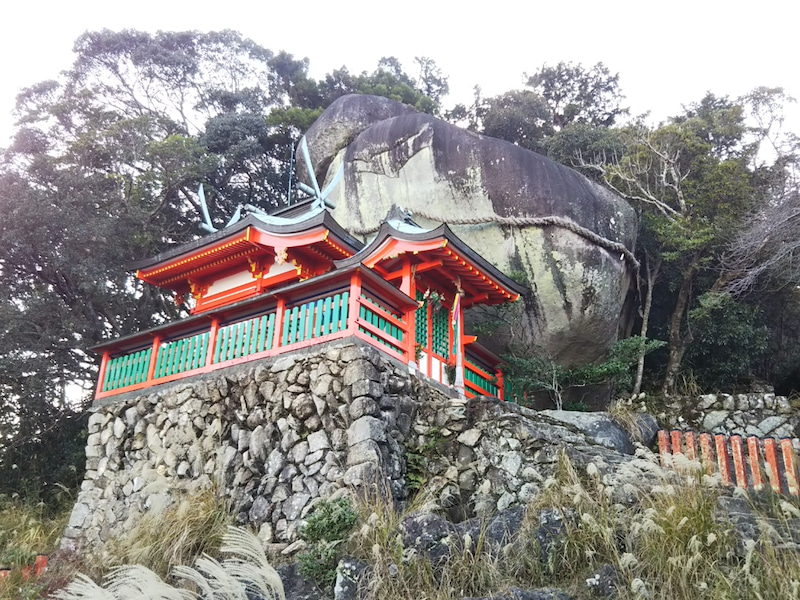
「神道」という言葉から連想される「神社」の建物は実は仏教の影響を受けて成立しました。本来は山や森自体が御神体なので、社殿は必要なかったのです。宗教としてはおそらく7~9世紀ぐらいの間に中央や地方の政治体制と関連しながら徐々に成立しました。「神道」という言葉自体も仏教信仰と対照されるようになって広く使われるようになった言葉なのです。神道が“体系化”されて行く過程で、多くの古きカミガミがその体系に取り込まれたり、そこから零れ落ちていったはずです。僕が日本で住んでいた地域は龍口明神社(神奈川県鎌倉市)の氏子です。
The building of shrines that we associate with the word “Shinto” was actually established under the influence of Buddhism. Originally, mountains and forests themselves were sacred, so there was no need for a main shrine. As a religion, Shinto was gradually established between the 7th and 9th centuries, in connection with the political systems of the central and local governments. The term “Shinto” itself came into wide use when it was contrasted with Buddhist beliefs. In the process of “systematization” of Shinto, many old Kamigami must have been incorporated into the system or dropped out of it. In the area where I have lived in Japan, I am a *Ujiko of the Ryukomyo Shrine (Kamakura City, Kanagawa Prefecture).
*Ujiko means people who live in the area and perform matsuri to the local Ujigami(god).
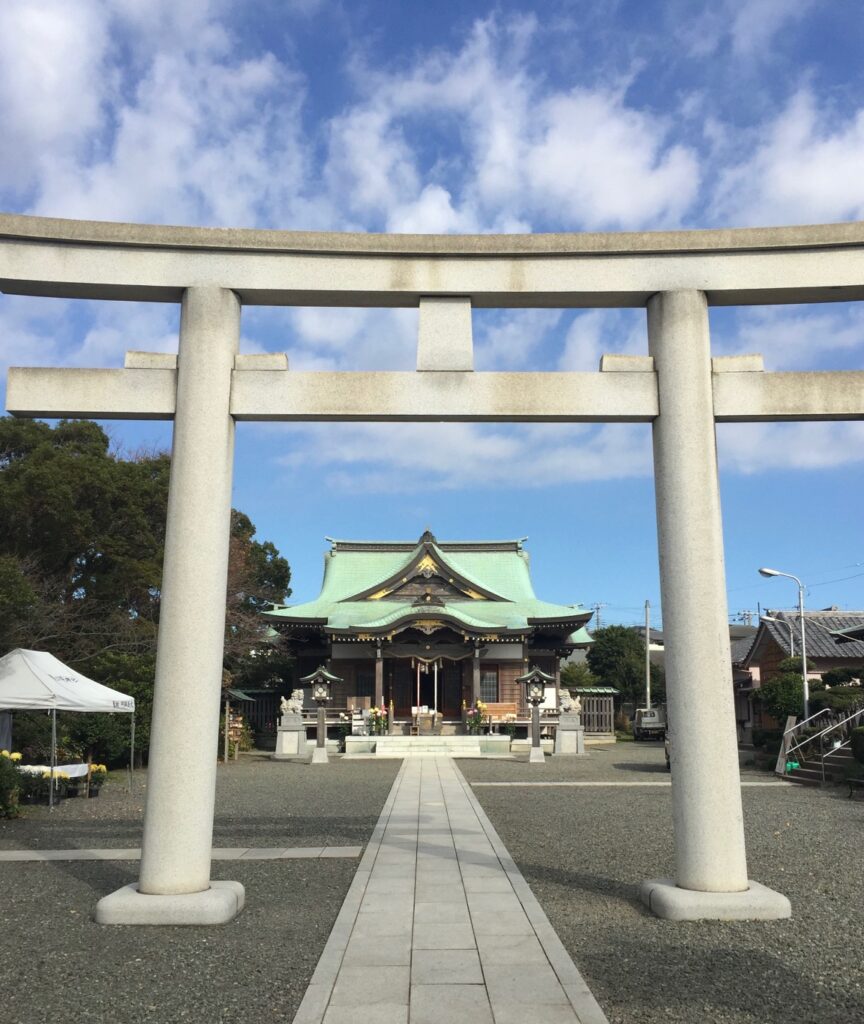
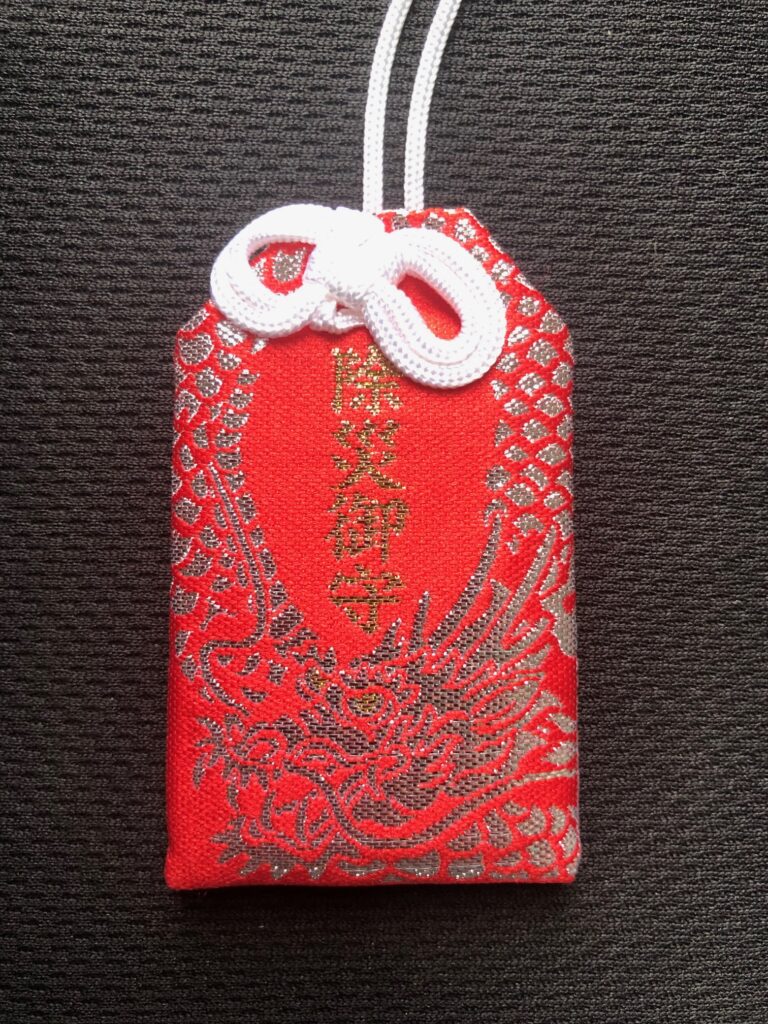
神社の縁起をみてみると、“玉依姫命は神武天皇の母、海神族の祖先で、龍神として崇められたと伝えられる。もう一つの祭神である五頭龍大神は、江の島の弁財天に悪業を戒められた龍であると伝えられ、江の島弁財天とは深い関係にある。この龍が改心し岩山と化した後、津村(腰越および隣接の現鎌倉市津一帯)の村人達が、龍の口にあたる岩上(龍口)に社を築いて白髭明神と称し、村の鎮守としたことが、龍口明神社の発祥とも伝えられている”とあります。祭神は玉依姫命、および五頭龍大神です。前回の話でも書きましたが、蛇や龍にまつわるカミはより古いレイヤーに属するカミの場合が多いです。そして、神話や伝説は史実をモノガタリ化したものです、多くの場合は時の権力者に都合が良いように改変されて。龍口明神社の縁起に関しても、元々鎌倉市津一帯に住んでいた縄文(的)な一族が後からやってきた(おそらく)ヤマト族に征服もしくは懐柔されたという史実を物語にしたものだ、というのが僕の理解です。そのストーリーラインに基づいて制作した僕の作品が『五頭龍大神』です。
According to the shrine’s origin story, Tamayorihime no Mikoto was the mother of Emperor Jinmu, an ancestor of the sea gods, and was worshipped as a dragon god. The other deity of the shrine, Gozuryu-Ohkami, is said to be a dragon who was warned of his evil deeds by Enoshima Benzaiten, and is closely related to Enoshima Benzaiten. After the dragon mended his mind and turned into a rocky mountain, the villagers of Tsu village (Koshigoe and the adjacent area of Tsu, current city of Kamakura) built a shrine on the rock (Ryukou) which is the mouth of the dragon, called it Shirahige Myojin, and made it the village guardian, which is said to be the origin of Ryukomyo Shrine. The deity of the shrine is Tamayorihime no Mikoto and Gozuryu-Ohkami. As I mentioned in the previous article, the kami associated with snakes and dragons often belong to an older layer of kami. And myths and legends are monolithic versions of historical facts, often altered to suit the authorities of the time. In my understanding, the story of Ryukomyo shirine is also based on the historical fact that a Jomon (or similar) clan that originally lived in the Kamakura City area was conquered or subjugated by the (probably) Yamato clan which is the ancestors of emperor, that came later. Following images are my artwork based on this story line “Gozuryu-Ohkami“.


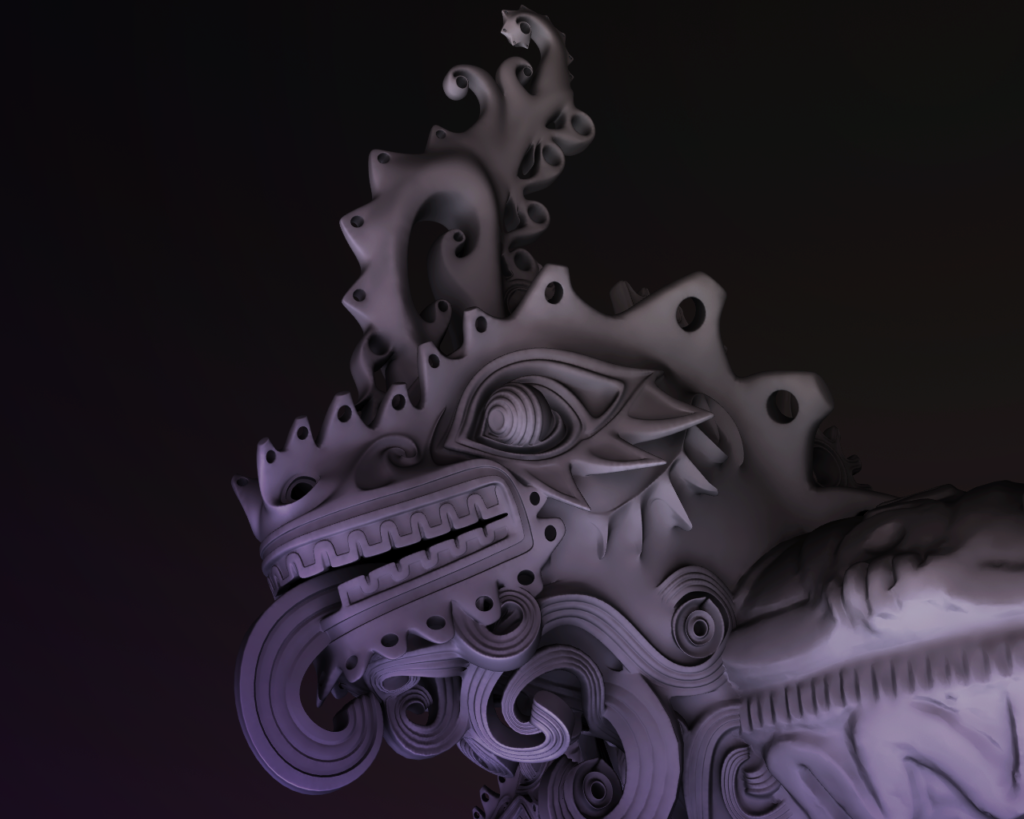
”古きカミ”ということを表すために3Dスキャンした本物の土器(山梨県、一の沢遺跡出土)のデータを使用させていただいています。5つの龍の頭部は縄文デザイン、マヤやアステカといった海外のトライバルデザインと、アニミズムの系譜である「怪獣」の融合で、それらが縄文土器と合体することにより視覚的にアニミズムから現代のサブカルチャへの繋がりを表しています。この作品は3Dプリントして龍口明神社に奉納させてもらうという計画だったのですが、まだ3Dデータとして完成しているだけなので、日本に帰ったときは奉納を実現したいと思っています。
“To express the “old kami”, I used digital scanned 3D data of real Jomon Doki(pottery), excavated at the Ichinosawa site in Yamanashi Prefecture. The five dragon heads are a fusion of Jomon design, Mayan, Aztec, other tribal design, and animism’s lineage of kaiju(monsters) which, when combined with Jomon pottery, visually represent the connection from animism to modern subculture. The plan was to 3D print this work and dedicate it to the Ryukou Myojin Shrine, but it is still only complete as 3D data, so I would like to realize the dedication when I return to Japan.
日本に古くからいたのはなにせ“八百万”のカミガミですから、信仰の体系には組み込まれなかったモノの方が大多数のはずです。それではその他のカミガミ、信仰の体系から零れ落ちていったモノたちはどうなってしまったのでしょうか? 一部は忘れ去られ、一部は民間信仰の中に生き、そして“妖怪”に姿を変えて現代まで生き残っているモノたちもいます。一応“妖怪”の辞書的な定義をしておくと、“妖怪(ようかい)は、日本で伝承される民間信仰において、人間の理解を超える奇怪で異常な現象や、あるいはそれらを起こす、不可思議な力を持つ非日常的・非科学的な存在のこと。妖(あやかし)または物の怪(もののけ)、魔物(まもの)とも呼ばれる”(ウィキペディア)
Since there have been “Yaoyorozu no (eight million) kamigami” in Japan all the way from ancient times, the majority of them were not incorporated into the religious system. Then, what happened to the other Kamigami, the ones who dropped out of the belief system? Some are forgotten, some live in folk beliefs, and some are transformed into “yokai” and survive to the present day. Here’s a dictionary definition of the word “yokai”, Yōkai (妖怪, “ghost”, “phantom”, “strange apparition”) are a class of supernatural monsters and spirits in Japanese folklore. The word ‘yōkai’ is composed of the kanji for “bewitching; attractive; calamity” and “spectre; apparition; mystery; suspicious.” Yōkai are also referred to as ayakashi (あやかし), mononoke (物の怪) or mamono (魔物). The characteristics of yōkai range diversely from malevolent and mischievous entities believed to cause misfortune and harm, to those who are considered to bring good fortune to those who encounter them.(Wikipedia)
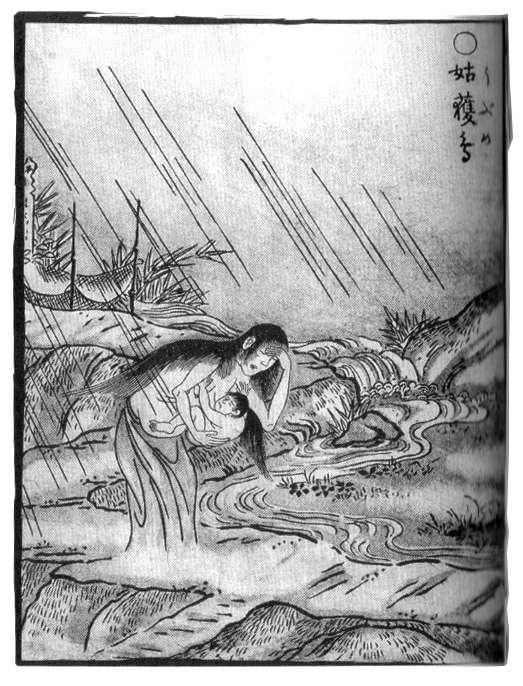
話はちょっと外れますが、“妖怪”を英語に訳すのが非常に難しい。辞書(Weblio)だとghostとなっていますが、幽霊というのはちょっと妖怪とは違うし、monsterだとゴジラ的になり過ぎる。これは妖怪の性質、出自、キャラクターが多岐に渡り一言では括れないからだと思います。例えば、産女(ウブメ)は妊婦の妖怪で死んだ妊婦をそのまま埋葬すると、産女になるという概念は古くから存在しています。多くは血に染まった腰巻きを纏い、子供を抱いて、連れ立って歩く人を追いかけるとされています。妖怪というカテゴリーに入っていますが、そのビジュアルからも分かる通り、幽霊的な要素が強い妖怪です。
This is a bit off topic, but it is very difficult to translate “yokai” into English. The dictionary (Weblio) says “ghost,” but “ghost” is a bit different from yokai, and “monster” is too Godzilla-like. I think this is because the nature, origins, and characters of yokai are so diverse that they cannot be summed up in a single word. For example, Ubume is a yokai of pregnant women, and the concept that a dead pregnant woman who is buried without cremation becomes a Ubume has existed since ancient times. Many of them are said to wear a waistcoat stained with blood, hold a child in their arms, and chase after people walking in company. They are in the category of yokai, but as you can see from their visuals, they have a strong ghostly element.
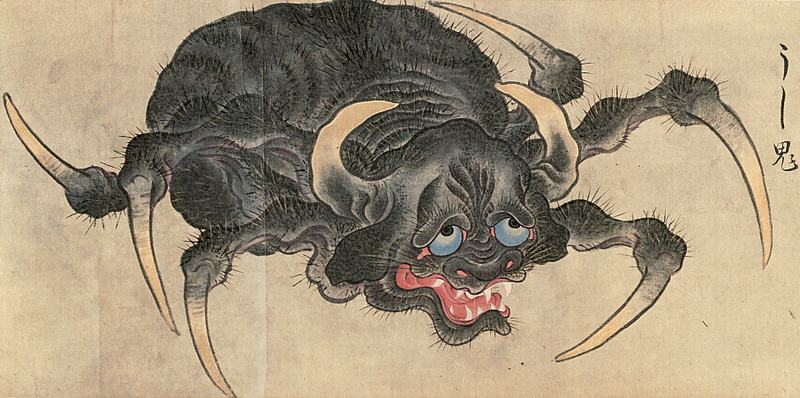
一方、牛鬼(うしおに、ぎゅうき)はその大半は非常に残忍・獰猛な性格で、毒を吐き、人を食い殺すことを好むと伝えられています。伝承では、頭が牛で首から下は鬼の胴体を持つ。または、その逆に頭が鬼で、胴体は牛の場合もあるとされていますが、ヴィジュアル的に有名なのは牛の首をもち蜘蛛の胴体を持っている姿で、凶暴とされる性質も相まってmonster的な要素が強い妖怪です。
On the other hand, the majority of Gyuki are said to be extremely brutal and ferocious, spitting poison and preferring to eat people to death. According to the lore, the head is an ox with the body of an Oni(ogre, demon) from the neck down. In some cases, the head is an Oni and the body is an ox, but the most famous visual image is that of a spider with the head of an ox, which, combined with its ferocious nature, gives it a strong monster-like element.
おそらく最も有名な妖怪のひとつである河童は日本中に様々な伝承が伝わっています。その起源は西日本と東日本で異なり、西日本では河伯信仰に連なる大陸からの渡来とされるが、東日本では安倍晴明の式神もしくは役小角の護法童子、術者がその仕事を手伝わせるために召喚した精霊、作り出した人形が変じたものとされています。いずれもカミ、精霊のような超常の存在が零落したものという部分は共通しています。
The lore of the most famous yokai, Kappa has been passed down from generation to generation throughout Japan. Its origins differ between western and eastern Japan. In western Japan it is said that it came from the continent(China) linked to the Kahaku(god of river) faith, but in eastern Japan, kappa is related to *shikigami of *Seimei Abe, or *gohō dōji of *En no Ozuno, which was created or summoned by their master to help them. All of them have in common that the paranormal beings such as kami and spirits have fallen or forgotten.
*Shikigami are conjured beings, made alive through a complex conjuring ceremony. Their power is connected to the spiritual force of their master, where if the invoker is well introduced and has much experience, their shiki can possess animals and even people and manipulate them, but if the invoker is careless, their shikigami may get out of control in time, gaining its own will and consciousness and can even raid its own master and kill them in revenge. Usually shikigami are conjured to exercise risky orders for their masters, such as spying, stealing and enemy tracking.
*Abe no Seimei was an onmyōji, a leading specialist of onmyōdō during the middle of the Heian period in Japan.[2] In addition to his prominence in history, he is a legendary figure in Japanese folklore and has been portrayed in a number of stories and films. Seimei worked as onmyōji for emperors and the Heian government, advising on the spiritually correct way to deal with issues. He prayed for the well-being of emperors and the government as well as advising on various issues. He was also an astrologer and predicted astrological events. He enjoyed an extremely long life, free from any major illness, which contributed to the popular belief that he had mystical powers.
*A gohō dōji (child of the defense of the Law) is a type of guardian spirit from Japanese Buddhist folklore devoted to serving followers of the dharma. In classic stories from medieval collections such as the Uji Shui Monogatari, it is generally depicted as a young boy wearing a collar of swords, with a large sword in one hand and a noose in the other. It flies through the air by riding a Wheel of Dharma.
*En no Ozunu, also En no Ozuno, Otsuno was a Japanese ascetic and mystic, traditionally held to be the founder of Shugendō, the path of ascetic training practiced by the gyōja or yamabushi.
感覚的に言うとヨーロッパ(アイルランド等)のfairy、妖精が一番妖怪に近い存在です。フェアリーというと、一般的に羽の生えた小さな人型をした存在、『ピーター・パン』に登場するティンカー・ベルのようなモノを思い浮かべると思いますが、実際はその見かけ、性質も妖怪同様多種多様です。人間に好意的で、助けてくれるものもいれば、人間を騙したり、命を奪おうとするものもあります。妖精の起源にはさまざまなものが考えられますが、その中に被征服民族の民族的記憶、異教の神や土着の神が神格を剥奪されたものであるという理由があります。妖怪も妖精も、忘れ去られてしまった古きカミガミや、もしくは自然の中で起こる不可思議な現象に名前を与えることによりキャラクター化したものだと僕は思っています。人間は名前のないものは認識できません、そして認識できないということは漠然とした恐怖なのだと思います。非日常的な現象、もしくは存在もキャラクター化することにより多少は腑に落ちる存在に転換できたのだと僕は考えています。
I think fairies of Europe(Ireland is the most famous for it) are the closest things to yokai. When we think of fairies, we usually think of small humanoid beings with wings, like Tinker Bell in Peter Pan, but they are also as diverse in appearance and nature as yokai. Some are friendly to humans and help us, while others try to trick us or sometimes try to take our lives. There are many theories for the origin of fairies, among them the ethnic memory of conquered peoples, pagan gods and indigenous gods stripped of their divinity. I believe that both yokai and fairies are characterized by giving names to forgotten old kamigami or mysterious phenomena that occur in nature. Humans can’t recognize things that don’t have names, and the fact that we can’t recognize them cause us vague fear. I believe that by characterizing extraordinary phenomenon or existence, we have been able to transform it into an existence that is somewhat understandable.
さて、妖怪を語る上で「ゲゲゲの鬼太郎」の作者水木しげる氏は外せません!がその話はまた次回で。
Now, when talking about Yokai, we can’t skip Shigeru Mizuki, the creator of “Gegege no Kitaro”! But I’ll talk about that next time.
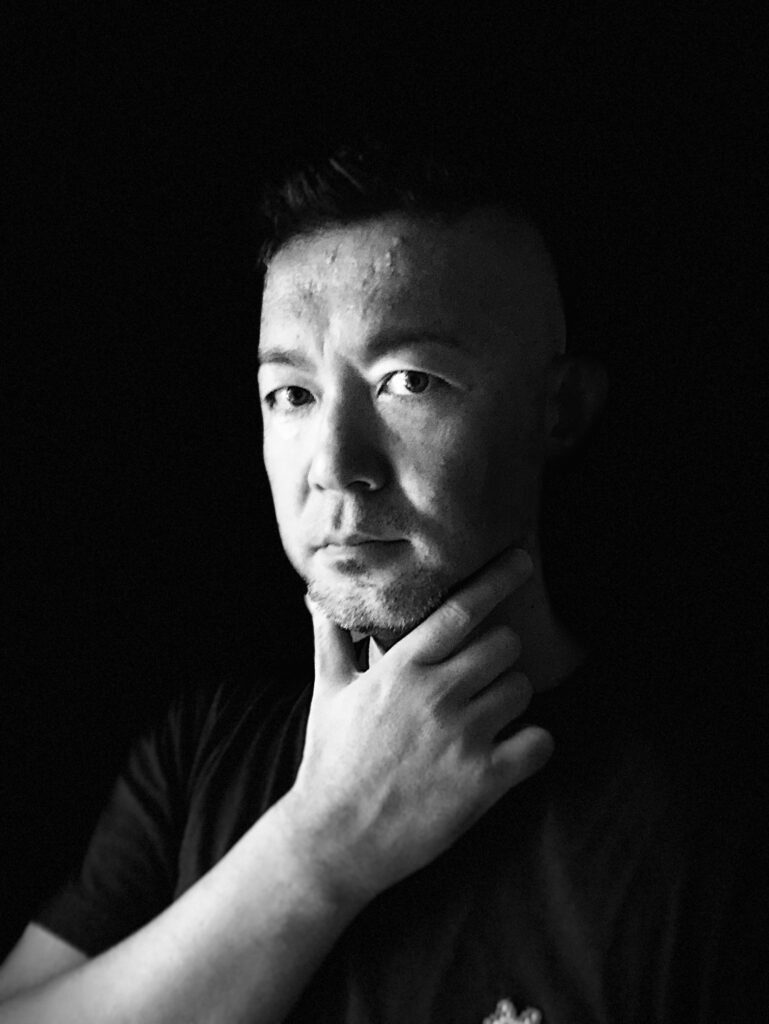
小林 武人 ポストデジタル・アーティスト
Taketo KOBAYASHI
Post-digital artist
ARTSTATION
Taketo Kobayashi (artstation.com)
Instagram ID
@humanoise
NPO法人JOMONISM 代表
https://humanoise.artstation.com
慶應義塾大学 環境情報学部卒。東京工科大学クリエイティブ・ラボ、株式会社ゴンゾを経てフリーランスに。現在は“ポストデジタル・アーティスト”として、CGや3Dプリント等のデジタルツールを“筆”として使いこなし、立体作品から映像まで幅広く制作。海外でも積極的に活動しており、美術家 坂巻善徳 a.k.a. senseとのコラボレーションプロジェクト“XSENSE”では、デジタル作品をストリートアートに活かし、ミューラル(壁画)を制作(コロラド州、デンバー)。また、独自の世界観のアニメーションを舞台美術として使い、コンテンポラリー能劇団とコラボレーションで公演も行った(サンフランシスコ、デンバー)。
自身の作品制作の他に、NPO法人JOMONISMが行う”ARTs of JOMON”展のキュレーションも担当。縄文文化から影響を受けた現代美術作家を世界に紹介し続けている(青森県立美術館、スパイラルガーデン、デンバー国際空港、クアラ・ルンプール等)。
目に見えないモノ、感情、エネルギー、意識の次の次元…等をカタチにすることがミッション。
現在はシンガポール在住
職歴・作品履歴(抜粋)
2004年
TVアニメーション「岩窟王」:背景デザイン、モデリング担当
2005年
スズキ「バーグマン」WEBプロモーション:バーグマン、モデリング担当
2007年
NHK アニ・クリ「火男(ヒョットコ)」:デザイン、モデリング担当
2012年
「MYSTICAL ABYSS」
アメリカ、サンフランシスコ、コンテポラリー能劇団Theatre of Yugenの公演、Mystical Abyss でオリジナルアニメーション制作、ライブプロジェクション担当
2013年-
アメリカ、デンバー、Art Across Cultures, Hope Onlineなどと共同で公演に参加。デンバーアート・ミュージアム等でアニメーションのプロジェクションを担当
2014年
2月 NPO法人JOMONISM企画「ARTs of JOMON展」@青森県立美術館、キュレーション担当
5月 シンガポール南洋工科大学3DPコンペティション参加。カンファレンス招待
11月 企業コラボーレションアート参加:オークリーストア原宿店にて作品展示
2015年
1月 NPO法人JOMONISM企画「ARTs of JOMON展」@スパイラルガーデン、キュレーション担当
2017年
“ARTs of JOMON -Hyper Subculture-” 展 キュレーション担当
伊勢丹 the ジャパンストア、クアラルンプール、マレーシア
2018年
”YouFab Exhibition – Imagination Manifests”@青年廣場 HongKong “More Than Human”プロジェクト、3Dプリント義足を展示
2019年
グループ展『童心』出展 銀座ホワイトストーン・ギャラリー
2020年
「Lights to the Night」アーティストに選出。シンガポール、アジア文明博物館にプロジェクション・マッピング
受賞歴等
オリジナルアニメーション『祭』(2010)
シーグラフ・アジア アニメーションシアター入選
YAOYOROZシリーズ『薬師如来』(2013)
3Dプリント用3DCG作品。日本図学会モデリングコンテスト、入賞
『SC1-EXP』(2014)
3Dプリント作品に映像をプロジェクション・マッピングしたインタラクティブ作品。
逗子国際プロジェクション・マッピング・フェスティバル、グランプリ
More Than Human『type-Unicorn』(2015)
3Dプリント義足。Ufab Global Creative award、ファイナリスト
“Eisen Herz”(2016)
構造計算を用いた3Dプリントミニ四駆カヴァー
Ufab Global Creative award、ファイナリスト
Taketo Kobayashi
Post-digital artist
ARTSTATION Taketo Kobayashi (artstation.com)
Instagram ID @humanoise
After having experience of 3D graphics and animation at Tokyo Institute of Technology creative laboratory, and Gonzo Co., Ltd., Taketo started his own project as an artist. Using digital technology like CG, 3D printing as his “brush”, Taketo creates a wide variety of artworks from 3D printed sculpture to animation. In a collaboration project XSENSE, Taketo utilizes CGI in street art to create murals(Denver, CO, USA), also using his unique style animation for stage design and collaborated with contemporary Noh theatrical group. In addition to creating his own artworks, Taketo curates the group art show “ARTs of JOMON” hosted by Japanese non-profit JOMONISM, keep introducing contemporary artists/artworks influenced by ancient Japanese Jomon culture.(Aomori Museum of Art / Spiral Garden / Denver International Airport / Kuala Lumpur)
It is Taketo’s mission to make invisible things, emotions, energy, next dimensions of consciousness into “shapes”.
Project/Art history(excerpt)
PROJECTS Digital G-O-D, UltraSuperNew gallery, Singapore, Jan 2020
Haw Par Villa RE•MIX
Chinese Cultural Centre, Singapore , Jan 2020
”Light to Night Festival” Projection mapping at Asian Civilization Museum, Singapore , Jan 2020
A SIGN OF THE TIMES EXHIBITION, Singapore , Jan 2019
”ARTs of JOMON” exhibit @ISETAN KL, Malaysia , Aug 2017, curation&direction
“Colorado Crush”, a mural festival in Denver, CO. Sept 2016, created artwork
“DMS” Collaboration with Canon June 2015, created&exhibited 3D printed prosthetic leg
”Oakley Exhibition” Exhibited artworks at Oakley store Harajuku, Tokyo, Oct 2014
AWARDS “Eisen Herz” Ufab Global Creative award Finalist. 2016. 3D printed cover for “Tamiya mini 4WD” using generative design
“More Than Human type-Unicorn” a 3D printed prosthetic leg. Ufab Global Creative award Finalist. 2015
“SC1-EXP” Zushi International Projection Mapping Competition, Grand Prix. 2014
“Yakushi-Nyorai”(2013)
3DCG model for 3D printing. Winning work at Digital modeling competition held by Japan Society for Graphic Science
Original CG animation ‘Matsuri’(May 2010)
Design, modeling, production coordination. A CG animation based on Japanese ‘Jomon’ culture. Created for promotion of Aomori Prefecture. Accepted at Siggraph Asia 2010. (On VIMEO: https://vimeo.com/25144961)